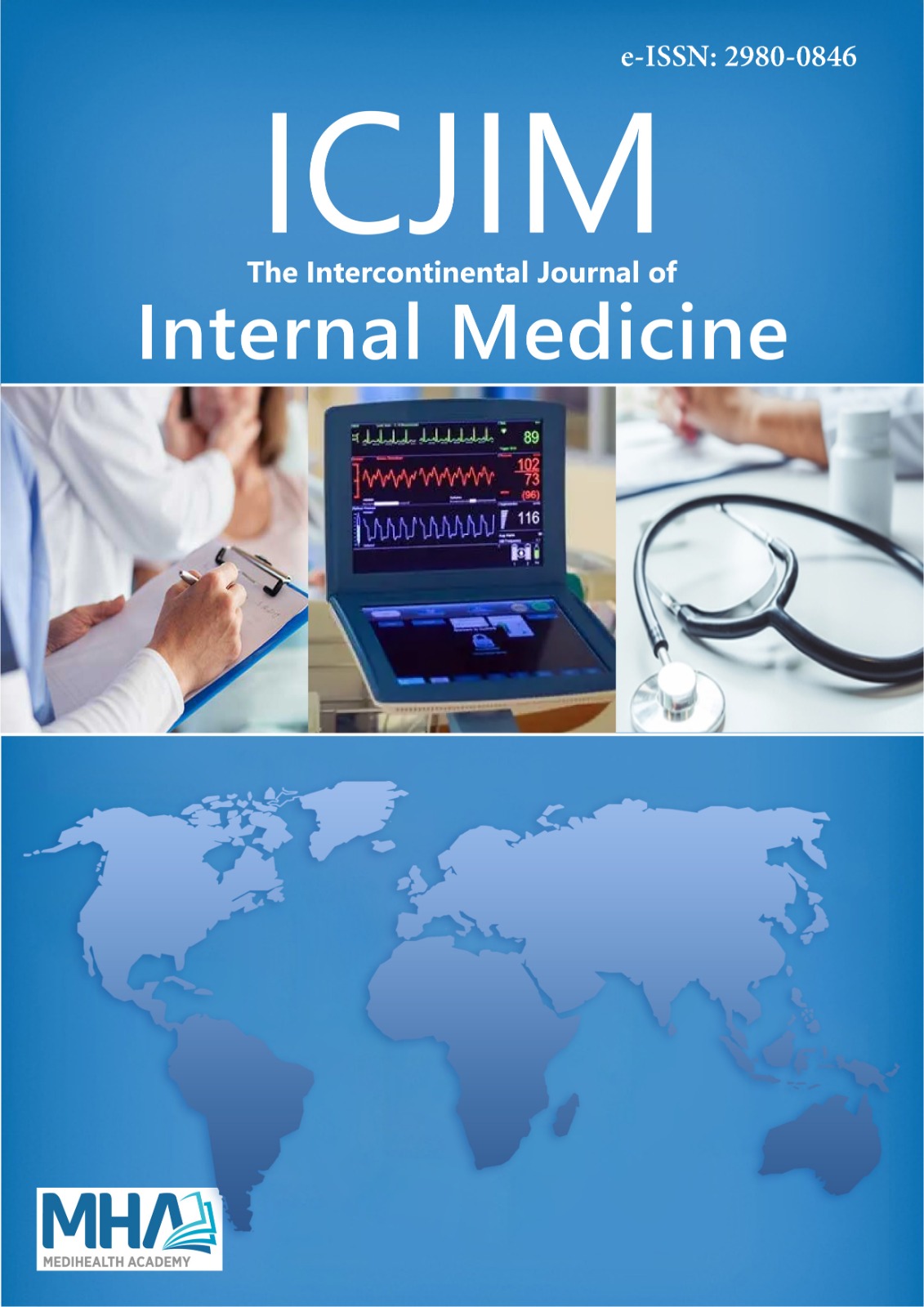1. Powanda MC, Moyer ED. A brief, highly selective history of acute phase proteins as indicators of infection, inflammation and injury. Inflammopharmacology. 2021;29(3):897-901.
2. Kushner I. The phenomenon of the acute phase response. Ann N Y Acad Sci. 1982;389:39-48.
3. Pathak A, Agrawal A. Evolution of C-reactive protein. Front Immunol. 2019;10:943.
4. Tillett WS, Francis T. Serological reactions in pneumonia with a non-protein somatic fraction of pneumococcus. J Exp Med. 1930;52(4):561-571.
5. Sproston NR, Ashworth JJ. Role of C-reactive protein at sites of inflammation and infection. Front Immunol. 2018;9:754.
6. Potempa LA, Siegel JN, Fiedel BA, Potempa RT, Gewurz H. Expression, detection and assay of a neoantigen (Neo-CRP) associated with a free, human C-reactive protein subunit. Mol Immunol. 1987;24(5):531-541.
7. Kushner I, Antonelli MJ. What should we regard as an “elevated” C-reactive protein level?. Ann Intern Med. 2015;163(4):326.
8. Aziz N, Fahey JL, Detels R, Butch AW. Analytical performance of a highly sensitive C-reactive protein-based immunoassay and the effects of laboratory variables on levels of protein in blood. Clin Diagn Lab Immunol. 2003;10(4):652-657.
9. Marnell L, Mold C, Du Clos TW. C-reactive protein: ligands, receptors and role in inflammation. Clin Immunol. 2005;117(2):104-111.
10. Rhodes B, Fürnrohr BG, Vyse TJ. C-reactive protein in rheumatology: biology and genetics. Nat Rev Rheumatol. 2011;7(5):282-289.
11. Rizo-Téllez SA, Sekheri M, Filep JG. C-reactive protein: a target for therapy to reduce inflammation. Front Immunol. 2023;14:1237729.
12. Szalai AJ, VanCott JL, McGhee JR, Volanakis JE, Benjamin WH Jr. Human C-reactive protein is protective against fatal Salmonella enterica serovar typhimurium infection in transgenic mice. Infect Immun. 2000;68(10):5652-5656.
13. Kingsley A, Jones V. Diagnosing wound infection: the use of C-reactive protein. Wounds UK. 2008;4(4):32-46.
14. Özsoy Z, Bilgin E, Aksun MS, Eroğlu İ, Kalyoncu U. Extremely high erythrocyte sedimentation rate revisited in rheumatic diseases: a single-center experience. Turk J Med Sci. 2022;52(6):1889-1899.
15. Bedell SE, Bush BT. Erythrocyte sedimentation rate. From folklore to facts. Am J Med. 1985;78(6 Pt 1):1001-1009.
16. Grzybowski A, Sak JJ. Who discovered the erythrocyte sedimentation rate?. J Rheumatol. 2011;38(7):1521-1523.
17. Piva E, Sanzari MC, Servidio G, Plebani M. Length of sedimentation reaction in undiluted blood (erythrocyte sedimentation rate): variations with sex and age and reference limits. Clin Chem Lab Med. 2001;39(5):451-454.
18. Miller A, Green M, Robinson D. Simple rule for calculating normal erythrocyte sedimentation rate. Br Med J (Clin Res Ed). 1983;286(6361): 266.
19. Litao MK, Kamat D. Erythrocyte sedimentation rate and C-reactive protein: how best to use them in clinical practice. Pediatr Ann. 2014; 43(10):417-420.
20. Daniels LM, Tosh PK, Fiala JA, Schleck CD, Mandrekar JN, Beckman TJ. Extremely elevated erythrocyte sedimentation rates: associations with patients’ diagnoses, demographic characteristics, and comorbidities. Mayo Clin Proc. 2017;92(11):1636-1643.
21. Fincher RM, Page MI. Clinical significance of extreme elevation of the erythrocyte sedimentation rate. Arch Intern Med. 1986;146(8):1581-1583.
22. Wiedermann FJ, Kaneider N, Egger P, et al. Migration of human monocytes in response to procalcitonin. Crit Care Med. 2002;30(5): 1112-1117.
23. Vijayan AL, Vanimaya, Ravindran S, et al. Procalcitonin: a promising diagnostic marker for sepsis and antibiotic therapy. J Intensive Care. 2017;5:51.
24. Taylor R, Jones A, Kelly S, Simpson M, Mabey J. A review of the value of procalcitonin as a marker of infection. Cureus. 2017;9(4):1148.
25. Assicot M, Gendrel D, Carsin H, Raymond J, Guilbaud J, Bohuon C. High serum procalcitonin concentrations in patients with sepsis and infection. Lancet. 1993;341(8844):515-518.
26. Hoeboer SH, van der Geest PJ, Nieboer D, Groeneveld AB. The diagnostic accuracy of procalcitonin for bacteraemia: a systematic review and meta-analysis. Clin Microbiol Infect. 2015;21(5):474-481.
27. Schuetz P, Chiappa V, Briel M, Greenwald JL. Procalcitonin algorithms for antibiotic therapy decisions: a systematic review of randomized controlled trials and recommendations for clinical algorithms. Arch Intern Med. 2011;171(15):1322-1331.
28. Alba GA, Truong QA, Gaggin HK, et al; Global Research on Acute Conditions Team (GREAT) Network. Diagnostic and prognostic utility of procalcitonin in patients presenting to the emergency department with dyspnea. Am J Med. 2016;129(1):96-104.e7.
29. Müller B, White JC, Nylén ES, Snider RH, Becker KL, Habener JF. Ubiquitous expression of the calcitonin-i gene in multiple tissues in response to sepsis. J Clin Endocrinol Metab. 2001;86(1):396-404.
30. Linscheid P, Seboek D, Zulewski H, Keller U, Müller B. Autocrine/paracrine role of inflammation-mediated calcitonin gene-related peptide and adrenomedullin expression in human adipose tissue. Endocrinology. 2005;146(6):2699-2708.
31. Kamat IS, Ramachandran V, Eswaran H, Guffey D, Musher DM. Procalcitonin to distinguish viral from bacterial pneumonia: a systematic review and meta-analysis. Clin Infect Dis. 2020;70(3):538-542.
32. Azijli K, Minderhoud TC, de Gans CJ, Lieveld AWE, Nanayakkara PWB. Optimal use of procalcitonin to rule out bacteremia in patients with possible viral infections. J Am Coll Emerg Physicians Open. 2022; 3(3):e12621.
33. Rodríguez AH, Avilés-Jurado FX, Díaz E, et al. Procalcitonin (PCT) levels for ruling-out bacterial coinfection in ICU patients with influenza: a CHAID decision-tree analysis. J Infect. 2016;72(2):143-151.
34. Relph KA, Russell CD, Fairfield CJ, et al. Procalcitonin is not a reliable biomarker of bacterial coinfection in people with coronavirus disease 2019 undergoing microbiological investigation at the time of hospital admission. Open Forum Infect Dis. 2022;9(5):ofac179.
35. Gul S, Ozturk DB, Kisa U, Kacmaz B, Yesilyurt M. Procalcitonin level and its predictive effect on mortality in Crimean-Congo hemorrhagic fever patients. Jpn J Infect Dis. 2015;68(6):511-513.

